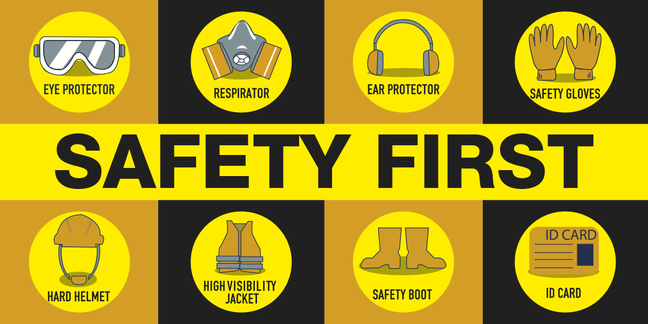Workplace
Safety and HR Compliance: Meeting OSHA Regulations for
Employee Well-being
In today's workplace, ensuring the safety and well-being of employees is a top priority. This imperative is rooted not only in ethical considerations, but also in legal obligations, particularly as seen through the lens of Occupational Safety and Health Administration (OSHA) regulations. At the intersection of workplace safety and HR compliance, a comprehensive approach is required to create an environment that protects employees while adhering to the complex web of safety regulations. This article discusses the importance of workplace safety compliance, the role of human resources in ensuring compliance with OSHA regulations, and strategies for fostering a safety culture within organizations.
Workplace
safety compliance is more than just a legal requirement; it is a commitment to
protecting employees' physical and mental health. Failure to meet safety
standards can result in injury, illness, low morale, and a tarnished
reputation, in addition to legal penalties. Organizations that prioritize
workplace safety foster an environment in which employees feel valued and cared
for, resulting in increased productivity, decreased absenteeism, and increased
employee loyalty.
OSHA,
the federal agency in charge of ensuring safe and healthy working conditions,
establishes a comprehensive framework of regulations that address various aspects
of workplace safety. From hazard communication and personal protective
equipment to recordkeeping and training, these regulations cover it all. Human
resources departments play a critical role in translating these regulations
into actionable strategies that protect employees while keeping the
organization compliant.
Human
Resources professionals serve as the linchpins that connect legal mandates to
practical implementation. Their responsibilities include everything from
developing safety policies and protocols to providing adequate training and
promoting a safety culture. HR departments must stay up to date on OSHA updates
to ensure that the organization's safety protocols remain current and in line
with changing regulations. HR is responsible for maintaining compliance and
improving employee well-being through effective communication of safety
measures, collaboration with cross-functional teams, and proactive incident
reporting mechanisms.
1. Comprehensive Training: Provide
regular training sessions to employees to educate them on potential hazards,
safe practices, and emergency procedures. These sessions empower employees to
play an active role in ensuring a safe workplace.
2. Risk Assessment: Conduct
thorough risk assessments to identify potential workplace hazards. HR
professionals can proactively implement risk-mitigation measures by identifying
areas of concern.
3. Effective Communication: Transparent
communication is essential for fostering a culture of safety. HR should ensure
that all employees are aware of safety policies, procedures, and protocols.
4. Leadership Commitment: A
safe culture begins at the top. Employees are more likely to follow leaders who
demonstrate a commitment to workplace safety. Encouraging leaders to take an
active role in safety initiatives can set the tone for the entire organization.
5. Safety Committees: Create
cross-functional safety committees that bring employees from various departments
together to identify safety challenges and propose solutions collaboratively.
6. Regular Audits: Conduct
routine safety audits to ensure that OSHA regulations are followed. These
audits aid in the identification of areas for improvement and demonstrate the
organization's commitment to safety.
7. Continuous Improvement: Insights
from incidents, near misses, and employee feedback should drive the evolution
of safety practices. Continuously improving safety protocols demonstrates a
dedication to learning and improving employee well-being.
The partnership of workplace safety and HR compliance results in a harmonious environment in which employees are not only protected from harm but also empowered to play an active role in their own safety. HR professionals can create a culture that prioritizes employee well-being and fosters a sense of trust and loyalty by embracing OSHA regulations. Organizations that pursue this goal not only meet legal obligations, but also build a resilient and thriving workforce that contributes to the organization's success.
HSI. (n.d.). The
Role of HR in Safety and Compliance. [online] Available at: https://hsi.com/blog/the-role-of-hr-in-safety-and-compliance.
YellowBird
(2022). The Important Role of HR Compliance in Safety. [online]
EHS & OSHA Consulting Services On-Demand | YellowBird. Available at:
https://goyellowbird.com/the-important-role-of-hr-compliance-in-safety/
[Accessed 11 Dec. 2023].
United States
Department of Labor (2023). OSHA Worker Rights and Protections |
Occupational Safety and Health Administration. [online] www.osha.gov.
Available at: https://www.osha.gov/workers.[Accedded 11 Dec.2023]


Thanks a lot for choosing the Strategies to Foster a Culture of Safety which is part and partial of wellbeing of a company culture .post content is with vital information of Guiding Framework for Workplace Safety and well linked with the HR main responsibilities to implement a safety culture.
ReplyDelete